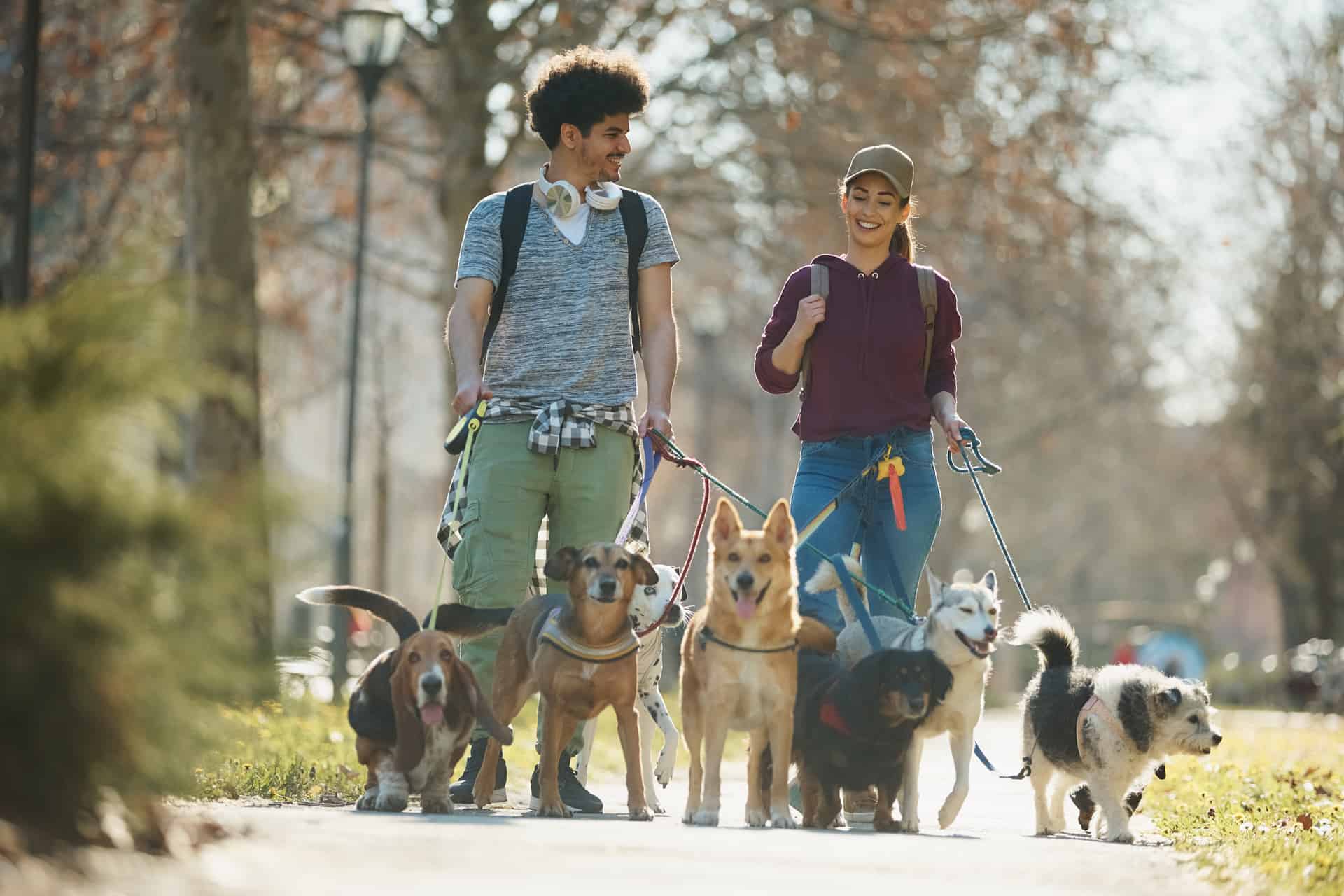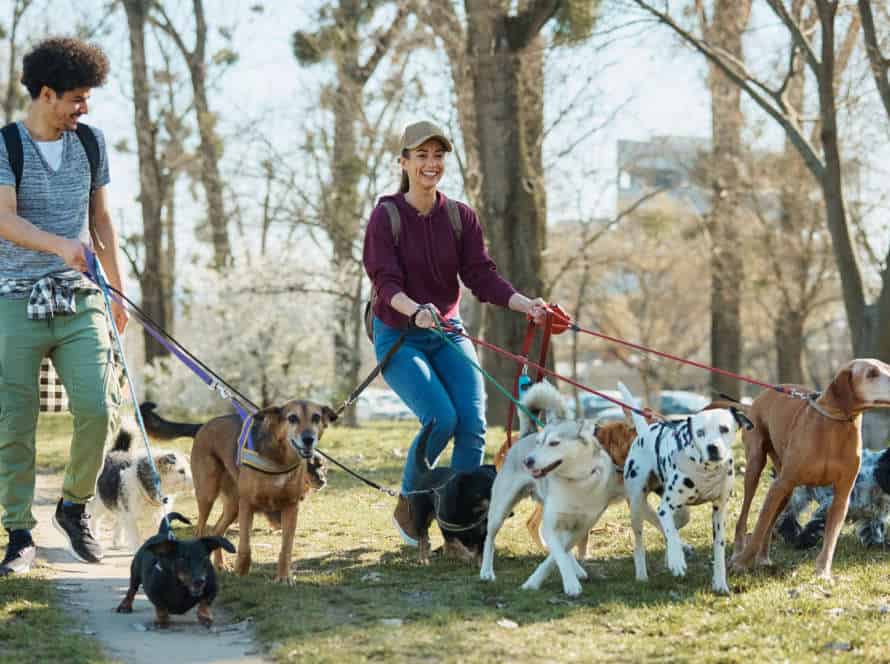Nature vs. Nurture: How It Affects Trainability
Nature vs Nurture – an age-old debate. It applies to dog training too. Some breeds are said to be easier to train than others. But how much of this is due to genetics, and how much to environmental factors?
Research has demonstrated that both Nature and Nurture contribute to trainability in dogs. Genetics can determine temperament, intelligence and energy levels. These can all affect their capacity to learn and obey commands.
Environmental factors such as socialization, training methods and consistency can also affect trainability. A dog who is well-socialized, with positive reinforcement training, is more likely to obey than one who has experienced negative training methods and inconsistent training practices.
It’s important to remember that every dog is different. Genetics may predispose a dog to obedience but consistent, positive reinforcement training benefits them all. Even a genetically independent dog can be taught with patience.
Pro Tip: Positive reinforcement and consistency are the keys to improving any dog’s trainability.
What is nature vs. nurture?
Nature vs. Nurture: What’s the Debate?
This debate impacts a lot of psychological and educational theories, and even animal training. Let’s explore it and see how it influences trainability. Nature is about genetic influences. Nurture is about environmental influences. The two combined determine how we learn and develop. It’s an important subject!
Defining nature and nurture
Nature pertains to genetics and biology, whilst nurture is about environmental situations and upbringing. The “nature vs. nurture” discussion tries to work out which component has a greater effect on a person’s growth, conduct, and identity.
When it comes to trainability, both nature and nurture matter. Even though genetics and biology can affect an individual’s capacity to learn and change, environmental aspects such as education, upbringing, and experiences also impact their trainability.
In the workplace, employers can improve their workers’ trainability by offering enjoyable and demanding tasks, chances to develop skills, and a supportive and encouraging work culture. By using both nature and nurture, individuals and businesses can reach their full potential for learning, growth, and success.
Examples of nature and nurture in traits
Nature is all about the genes and biology that shape a person’s traits. Nurture, though, is about the environment that moulds an individual’s behaviour and character. Both have an effect on characteristics. Nature and nurture interact to produce different outcomes. Here are some examples:
Intelligence – Whilst IQ is mostly inherited, environmental elements such as education and upbringing can have an impact on someone’s intellectual capabilities.
Personality – Genetics and environmental factors, such as upbringing and life events, both affect aspects of personality, e.g. temperament and social skills.
Athletic ability – Natural physical features, like height and body type, contribute to sporting skill. But, training and practice are essential in developing athletic ability.
Emotional resilience – Some people may have a genetic propensity towards resilience. However, social support, coping mechanisms and traumatic experiences can also influence one’s emotional resilience.
To determine how trainable a trait is, everything is important – from genes to upbringing.
How nature and nurture impact behavior and abilities
Nature and nurture both have an effect on behaviour and capabilities. Nature relates to genetic and biological factors that influence a person. Nurture covers environment and social factors.
For instance, intelligence can be influenced by genetics and upbringing. Inheriting certain traits can contribute to intelligence, but the opportunities from upbringing, like quality education and stimulating environments, can be important too.
Trainability is another place where nature and nurture meet. Certain dog breeds for example, may be genetically drawn to specific roles, like hunting or herding. But the dog’s environment, training and overall care will decide how well they do in that role.
Overall, nature vs. nurture isn’t a competition. They both work together in forming an individual’s behaviour and abilities.”
Trainability
Trainability is the capacity for an organism to be taught or conditioned to react to cues or stimuli. This varies across species. Nature and nurture both heavily affect this. Nature is the organism’s biological makeup, and nurture is the way it is raised or treated. Here, we will investigate how these two forces influence trainability.
Defining trainability
Trainability is the capability of an individual to learn and adjust to new aptitudes and behaviors. It alludes to the cognitive and behavioral characteristics which affect a person’s ability to comprehend and react to training.
Nature and nurture both decide if a person is normally trainable or not. Certain individuals might have a genetic tendency to learn simpler, however environmental aspects, for example, upbringing, experiences, and introduction to new and testing circumstances can also influence trainability.
In any case, even if a person has lower inherent trainability, it is conceivable to enhance their capacity to learn and adjust through consistent training sessions, positive reinforcement, and the utilization of various teaching strategies that accommodate their learning style.
Hence, trainability is a complex and dynamic characteristic that can be improved with effort and the correct strategy.
Factors that impact trainability
Trainability of a person can be affected by many things, such as nature and nurture. Some learn quickly, while others may need more time and effort. Factors that could influence a person’s trainability are:
- Genetics: These can affect a person’s cognitive abilities and learning potential.
- Environment: Where somebody lives and learns can have a big impact on trainability. Education, new experiences and a supportive family can help to boost a person’s natural skills and learning.
- Motivation: Desire to learn can affect trainability. Having a positive attitude, a willingness to learn and a good work ethic can enhance trainability.
- Experience: Past experiences can shape how well one can learn and apply new skills. Those who have had chances to learn and practice can find it easier to learn more.
Pro tip: To improve trainability, create a positive learning environment, make use of past experiences and find motivating strategies.
The role of nature in trainability
Nature’s role in trainability refers to the natural traits and characteristics animals possess when they are born. These determine their ability to learn and be trained.
Border Collies, for example, have a natural knack for learning and performing tasks, while bulldogs may find it harder due to their genetics. Nevertheless, environmental factors and training methods also play a part in an animal’s ability to learn and remember new behaviors.
By using positive reinforcement techniques and making a supportive training environment, even animals with less natural trainability can still learn and become skilled.
Pro Tip: To boost trainability, create a positive and consistent training atmosphere, and reward and reinforce desired behaviors.
The role of nurture in trainability
Nature’s role is not the only thing impacting a dog’s trainability. Nurture matters too! Nurture means the environment and conditions a pup experiences. This includes the quality of their training, diet, and activity. All of these things can affect a pup’s ability to learn and adapt. So, when looking at trainability, don’t forget about nurture!
Environmental factors that impact trainability
Trainability in animals is greatly impacted by the environment. Nurture is essential for tapping an animal’s full potential. Here are some environmental elements that influence trainability:
- Socialization: Introduce animals to different settings, people, and other animals early on, to make them more comfortable and flexible when training.
- Positive Reinforcement: A rewarding training process increases an animal’s desire to learn and memorize new behaviors.
- Consistency: Having consistent routines and rules helps animals understand what is expected of them and prevents frustration.
- Distraction: Excessive distractions or stress can make it difficult for an animal to stay focused on training.
By understanding these environmental factors, trainers can create tailored training programs that suit an animal’s needs and abilities.
Training and socialization impact on trainability
Genetics and training both affect a dog’s trainability. But, with enough training, socialization and nurturing, a dog’s capability to learn new commands and behaviours is better. Here’s how to do it:
- Training: Through regular training and positive encouragement, a pup can learn more quickly and easily. Starting when they’re young helps form good habits.
- Socialization: Interacting with other dogs and people can help a pooch become more confident in different situations. It can also reduce anxiety and aggression.
- Nurturing: Creating a safe and loving atmosphere increases trust and respect. Dogs that feel secure and comfortable usually respond positively during training.
Remember: Every dog is unique. Be patient and consistent to improve a canine’s trainability.
The impact of early experiences on trainability
Early experiences are important for shaping how easy it is to train a dog. Nurturing is key. Positive experiences with humans such as socialization, exposure to different places, and reinforcement of good behaviour, helps puppies to be more eager and ready to learn.
Puppies that don’t have these experiences may become fearful, anxious and difficult to train. Genetics have an effect, but it’s the early experiences which really have the biggest impact. So, it’s important to give puppies positive and stimulating experiences from an early age for the best chance of successful training.
Nature vs. nurture in dog breeding
The argument of nature vs nurture is not restricted to humans alone. It can also be used to comprehend how dog breeding impacts how easy they are to train.
Nature-based dog breeding techniques
Dog breeding can be done through nature-based techniques. These techniques use the dog’s natural instincts and behavior, making them more trainable and having better temperaments.
So, here are some of these techniques:
- Selecting parents based on their personality traits, abilities and trainability.
- Early socialization and exposing them to different experiences. This builds trust and confidence.
- Setting up a predictable environment with consistent routines. Positive reinforcement training methods should be used.
- Breeding for temperament over physical traits should be prioritized.
It’s important to note that nature-based breeding techniques help with trainability, but nurture and environment play a huge role in temperament and behavior.
Nurture-based dog breeding techniques
Nurture-based dog breeding puts emphasis on the upbringing and environment of the canine above its genetic makeup. Genes still have an influence on a pup’s temper and trainability, but raising and training are just as important. Here are some tips:
- Early socializing: Expose pups to different people, animals, and places early.
- Positive reinforcement: Utilize treats, compliments, and rewards to motivate the desired behaviour.
- Consistency: Always use the same cues, commands, and results when communicating expectations.
Pro Tip: Every dog is unique and reacts in different ways to training. Remain patient, consistent, and focus on positive reinforcement to cultivate your pup’s talent for learning and development.
The impact of nature and nurture on dog training success
Nature and nurture are both key for training a dog successfully. Nature determines the pooch’s natural traits such as its personality, energy level and intelligence. Nurture shapes the pup’s behavior and ability to learn. Trainers must be aware of the breed and the individual pup’s nature. Adapting techniques to fit the pup’s learning style is important.
For example, an active breed like a border collie would need exercise and play. A low-energy breed like a bulldog needs a more relaxed and patient approach. Nurturing environment also has a significant role. Positive reinforcement and consistent training in a nurturing environment can help train dogs. It will help them overcome their natural tendencies and create good habits.
In conclusion, nature and nurture both have a major part in successful dog training.
Conclusion
Nature and nurture have a strong connection when it comes to trainability. Occasionally, the environment should take precedence over genetics, but sometimes the opposite is true. The balance of nature and nurture depends on the person and their task. Knowing how they work together is key for successful training.
The importance of nature and nurture in understanding trainability
Nature vs. Nurture in trainability is essential. Nature suggests inherited skills and abilities, while nurture believes environment, upbringing, and experience shape capabilities.
The importance of both is vital. Genetics may provide a learning potential, while environment and life experience form it into actual skills and abilities.
Conclusion? Neither/nor. It’s a complex interplay between the two. Understanding both can help tailor training and development programs to each person’s unique learning potential.
The need for a balanced approach to dog training and breeding.
Balancing training and breeding is key for optimal development of a dog’s trainability. Nature and nurture both play major roles in a pup’s behavior. Nature is the pup’s genetic predisposition and nurture is its environment and training.
Nature: Genes have an influence on breed temperament and behavior. Some breeds are more trainable than others. Even though changing behavioral tendencies is impossible, breeding can help make dogs healthier and more trainable.
Nurture: Training and socializing can improve a dog’s trainability. Training builds skills and socializing helps develop their confidence when dealing with people, animals, and different settings.
Dogs who have the right mix of nature and nurture have a higher trainability quotient than those who are not trained or socialized. With the right combination, any pup can be highly trainable, obedient, and responsive to commands.
Tip – Early and consistent training helps provide consistency and structure to a pup’s behavior, helping them to develop better traits.
Frequently Asked Questions
1. What is the nature vs. nurture debate in relation to trainability?
The nature vs. nurture debate is the argument surrounding whether genetics (nature) or environment (nurture) play a greater role in determining a person’s trainability and ability to learn.
2. Can trainability be entirely attributed to nature or nurture?
No, trainability is influenced by both nature and nurture. Genetics play a role in determining a person’s cognitive abilities and potential for learning, but environmental factors such as upbringing and education also impact trainability.
3. How can nature influence trainability?
Genetic factors such as intelligence, temperament, and personality traits can impact trainability. For example, individuals with a high IQ may have a greater capacity to learn and retain knowledge.
4. How can nurture influence trainability?
Nurture can influence trainability through positive and negative reinforcement, education, and environmental factors such as access to resources and opportunities. A supportive and stimulating learning environment can enhance trainability.
5. Can trainability be improved with training and education?
Yes, trainability can be improved through training and education. Practice, feedback, and reinforcement can help individuals develop new skills and improve their ability to learn.
6. Can genetic factors limit trainability?
While genetics can influence trainability, they do not necessarily limit it. With the right environment, training, and education, individuals can overcome genetic limitations and develop their learning abilities.







